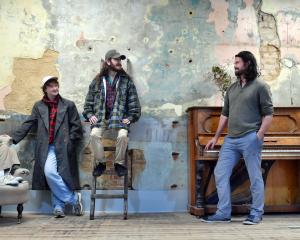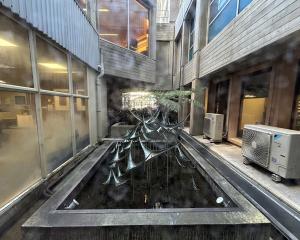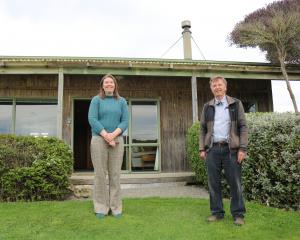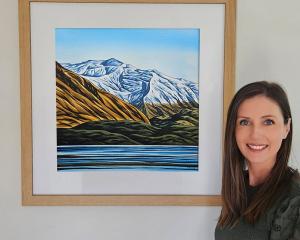
The title of the upcoming Ngai Tahu contemporary visual artists’ exhibition has many meanings for its participants.
There is the whakapapa — from the union of Papatuanuku with Rakinui Rehua, Tane and many other children came into being, including the great voyager Paikea: the father of Tahupotiki, the ancestor of Ngai Tahu.
The artists themselves are descendants and the group which curated the exhibition, Paemanu, is a collective of contemporary artists who aim to cultivate a Ngai Tahu visual culture for future generations by exploring Ngai Tahutanga (inherited common identity) through contemporary visual art.
The group, which includes Areta Wilkinson, Ayesha Green, Lonnie Hutchinson, Martin Awa Clarke Langdon, Nathan Pohio, Peter Robinson, Rachael Rakena, Rongomaiaia Te Whaiti, Ross Hemera, Simon Kaan, Kiri Jarden and Vicki Lenihan, has brought together more than 40 Ngai Tahu artists’ work — sculpture, painting, moving image, sound, installation, photography and more — for the exhibition.
Dunedin Public Art Gallery director Cam McCracken says it is an exciting moment coming after five years of talks between the gallery and Paemanu to develop a relationship and get to a point where this exhibition could take place.
"This exhibition is a milestone, one of what we anticipate as many outcomes of our relationship. It’s about a very unified group that share the same aspirations."
It began with the placing of three kohatu mauri in the gallery foyer after consultation with the three Otago runanga — Otakou, Puketeraki and Moeraki — and continued with "Hurahia Ana Ka Whetu, Unveiling the Stars" exhibition which opened earlier this year featuring Maori and Pacific art from within the collection as well as work by Hemera.

McCracken says the kohatu have been occupying the space, "keeping the fires burning" for Paemanu and this exhibition which is the first time the group has exhibited at DPAG.
"That for me it was a huge moment, this is a huge moment, but that one was a real groundbreaking moment for the development of the gallery. It is history unfolding. We will look back at that moment as key."
It follows on from Paemanu’s "Nohoaka Toi" exhibition at Christchurch’s Centre of Contemporary Art in 2017 which followed a theme of occupying a space, re-thinking their relationship to galleries.
The Dunedin exhibition uses the concept of "tauraka toi, a landing place" as a theme which draws all the works together.
"This is our landing place. It’s a place we have come to, to set our work down, to lay our work out, to hang it on the walls so it’s a conceptual idea that follows our whakapapa based on our waka and particular our important waka on this Araiteuru coast," Hemera says.
"Taking that as an idea, of our waka first arriving here on this land. We are re-living it, a landing. It is celebrating and re-living our ancestors first landing here."
For Rakena what has been exciting about the theme is that tauraka toi, a waka landing place is not just a first landing, it is a repeated landing and setting off place.

Paemanu has signed an agreement with DPAG for it to be the caretakers of the Paemanu-owned collection.
"It has become a landing place. This is where we are going to pull up the waka full of art, its going to come and go from here. It will be stored here, taken care of and hopefully go out into the world and come back here. It’ll be a tauraka toi literally."
To have the artists’ work held together in a "cohesive Ngai Tahu waka" is also exciting.
"We gather ourselves together and have exhibitions together but this is like a whole next step. It’s a longer-term legacy, thinking of next generations."
The group’s name Paemanu means the thwart of a waka and it is also the collarbone; again it reflects the theme of the exhibition.
"In particular we were thinking about our rock art and the idea of us as artists we come together as Paemanu and then we fly off. Pae is a place you can settle, land together and then we fly off around the world. It’s a very similar notion."
Hemera says while there is the odd collection of Ngai Tahu work in galleries around the country and at Ngai Tahu headquarters, the DPAG-based collection will be a substantial collection of a national and international standard that will be available for continual exhibitions.
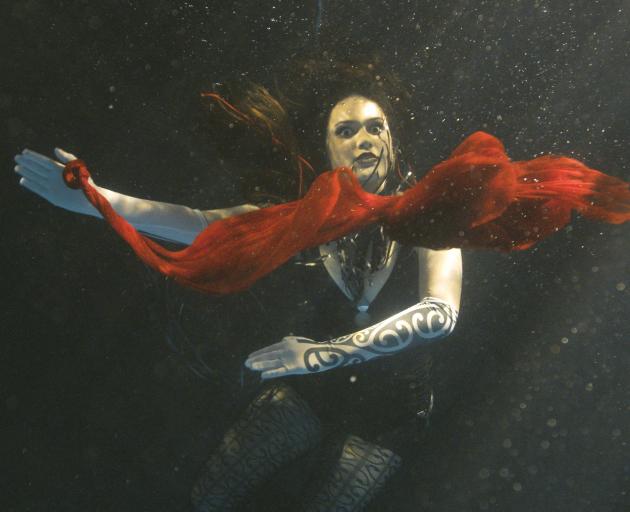
"While we are a cohesive group, we are evolving and changing and really one of our main outcomes in our charter is to develop Ngai Tahu visual culture and in order for that to happen we need our young ones coming up with us."
The exhibition gave them a platform to work with Paemanu members under certain kaupapa (principles and ideas) and have a space for them to express themselves as Ngai Tahu.
Rakena says while the artists are all Ngai Tahu they live across New Zealand so it has been important for them to connect with local people. They have held wananga (meetings) and visited Otakou, Puketeraki and Moeraki.
"We’ve actively tried to ensure we touched ground there with local people and for artists to understand this place."
Hemera says it has always been important for Paemanu artists to share their ideas and their work with our own people.
"We have been looking at ways our people can feel comfortable and at ease with visiting our institutions and having them come into the gallery and feeling like it is their place to come and view their taonga (treasures) and view their taonga."
DPAG curator Lucy Hammonds says it has been a totally different process to pull together this exhibition with the curatorial team working behind and in support of the artists.
"The variation of work is reflected in the variation of contemporary art across the world. People can expect to see a wide variety of works and see artists in different stages of their careers. That is a particular characteristic of this, there are many artists showing work here for the first time and many artists who have shown work many times.

Institutionally, she says it feels entirely right and appropriate that DPAG is marking this summer as a gallery that sits on Ngai Tahu whenua by occupying and redirecting all parts of the institution through the lens of Ngai Tahu contemporary art.
"It feels great."
Hemera says the land, "this place" is very important to Ngai Tahu and wherever "we go we think about the land".
"It is one of the defining points about us as Ngai Tahu. We are so diverse but there are things we are all bound together by one is whakapapa (geneology) the other one is whenua. You see that reiterated through the work but told in so many different ways.
"Those are the themes in every piece of work."
Hammonds says throughout the exhibition there has been a real effort in several cases to bring forward information that might be new to people such as different names for places and events that might be slightly outside of mainstream storytelling about this particular area.
"I can see the hunger from our audiences, our schools, our visitors to better understand the stories of this area and you can see in the works on these walls the artists coming to that kaupapa as makers of contemporary art.
"It has great potential to effect change in people’s understanding of place."





